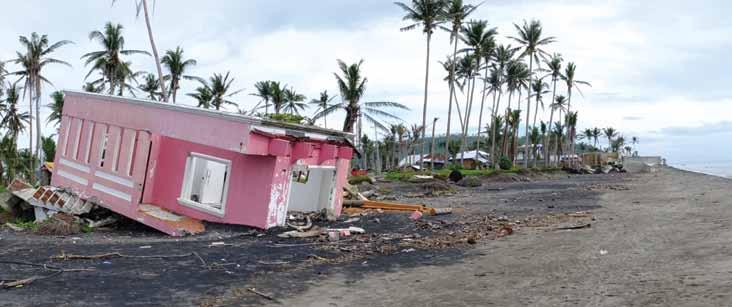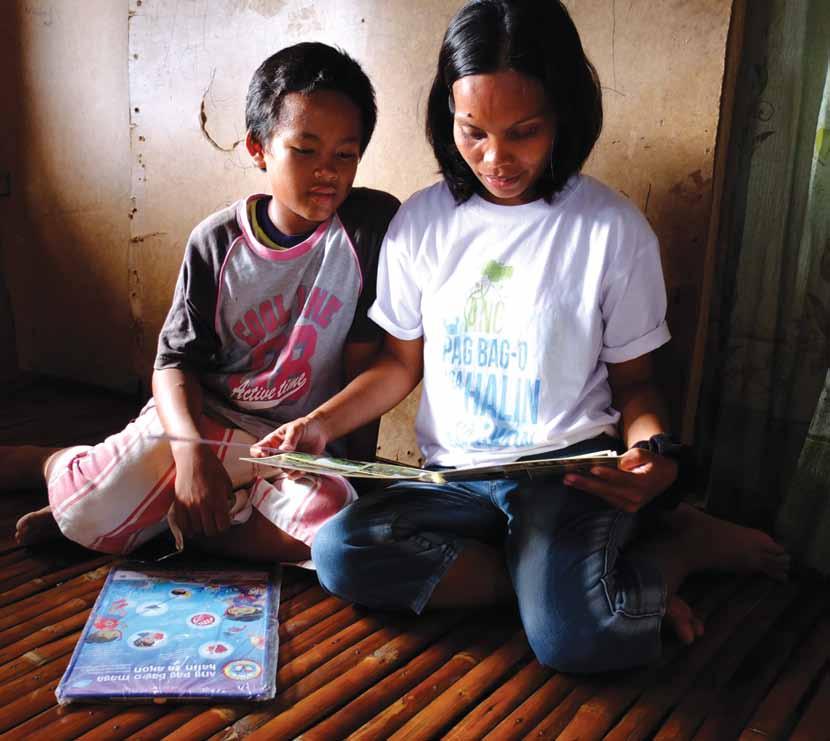
3 minute read
About SM Lite Goals and objectives
SM Lite Goals and objectives
Typhoon Yolanda wreaked havoc to the coastal communities of Tacloban in Leyte in November 2013
Advertisement
Improved communities’ mindset and behaviour towards coastal biodiversity protection and climate change adaptation Social marketing is about an exchange of value and benefits. Changing behaviour is hard and social marketing is about identifying a deficit or need that is detrimental to society or the environment and educating the community about the need and solution. The challenges we all must face in adapting to climate variability and change present themselves with increasing urgency. Nowhere will these challenges be greater than in the coastal and marine sector, where often weak institutions and governance systems struggle to deal with mounting pressures from population growth, inadequate infrastructure, and diminishing or already depleted natural resources. In this context, the unique ecosystem processes and extraordinary development pressures within the coastal zone require that both national and local governments, give special urgency to the task of helping to build resiliency against the impacts of climate change in and with coastal communities. The changes are many and already underway. They include rising sea level, increasingly intense cyclones, altered precipitation and runoff, elevated sea surface temperature, and ocean acidification.
SM Lite was applied to make “downstream” changes. For downstream changes this means that there are environmental policies in place (e.g., declaration of an MPA as an official protected area) but local coastal communities often lack the knowledge on or are apprehensive towards following the rules and regulations pertaining to the MPA. It may also be useful to consider applying SM Lite for “upstream” changes, wherein environmental and policy changes can be the primary goal rather than individual level behavior changes for conservation. This knowledge product cites the pilot experience on SM Lite, which focused on steering levels of knowledge, attitudes and practices at the individual level in a positive direction.


Integrate a tool to understand human behavior in regular coastal and marine planning and management processes In addition to current tools used for assessing natural, biological and ecological resources for MPAs, SM Lite advocates the complementary use of a methodology to understand the behavior of people towards their natural resources. SM Lite is both science and art, and has to be well thought out and tested. A campaign is designed around a specific and measurable social change initiative and change in behaviour that can help evaluate the success of work. SM Lite’s Knowledge, Attitude and Practices survey can be deployed alongside the Management Effectiveness Assessment Tool (MEAT) or Management Effectiveness Tracking Tool (METT); and/or as a capacity-building for organizational development of MPA management councils/committees/inter-LGU alliances; or be promoted as a social assessment tool to gain community involvement just like the Participatory Coastal Resources Assessment. Right at start community involvement is sought by SM Lite for buy-in. As more and more people from various sectors are involved with clear roles and functions for MPA management, coupled with the elements of time and strategic communication to embed such practices, threats to the MPA can be reduced and protection of biodiversity will be enhanced.

The LGU of Sagay and Museo Sang Bata ng Negros tapped the youth of Suyac Island to be Junior Ecopatrols, the champion of their SM Lite campaign for the Sagay Marine Reserve, whose parents and relatives are now leading the complementary community-based livelihood program called the Eco-Park Mangrove in their island.

Greater community buy-in for improved MPA governance and enforcement It is part of the GIZ-Rare’s partnership goal to involve selected communities by having them understand and be part of good governance and enforcement to protect MPAs. SM Lite is an approach to influence communities to sustain a well-governed marine protected area by seeking the active involvement of the locale in every step, from the basic research/baseline gathering of their perceptions, movitations and fears, co-approving campaign materials/strategies up to the final launch of the campaign. Thus, along the way, their understanding of their roles and function for the project and its long-term benefits is enriched, and the community ownership of the campaign messages and goals is developed.






